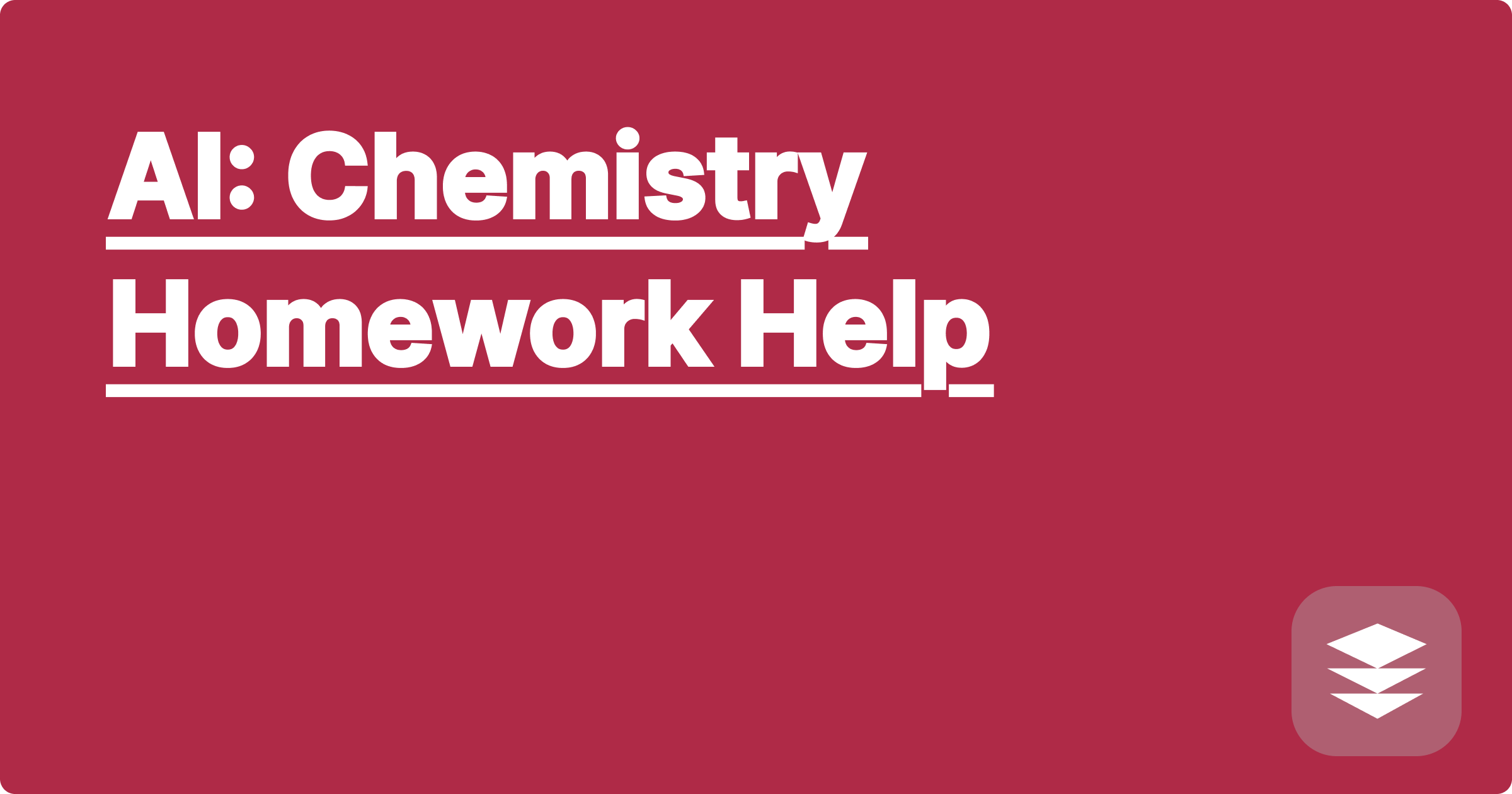
STEM fields, particularly chemistry, often present complex challenges for students and researchers alike. Balancing equations, predicting reaction outcomes, understanding intricate molecular structures, and navigating the vast landscape of chemical literature can be daunting. Artificial intelligence (AI) is rapidly emerging as a powerful tool to address these challenges, offering innovative solutions to streamline learning and accelerate research. AI can act as a personalized tutor, providing step-by-step guidance through complex problems, or as a research assistant, sifting through mountains of data to uncover hidden patterns.
This transformative potential of AI has significant implications for STEM students and researchers. By leveraging AI-powered tools, students can gain a deeper understanding of fundamental concepts, improve problem-solving skills, and enhance their overall learning experience. Researchers can accelerate their work by automating tedious tasks, analyzing complex datasets, and generating novel hypotheses. This symbiotic relationship between humans and AI promises to revolutionize how we approach scientific inquiry and education.
Chemistry encompasses a vast array of concepts, from basic stoichiometry to complex quantum mechanics. Students often struggle with balancing chemical equations, predicting reaction products, and understanding the underlying mechanisms. These difficulties are compounded by the sheer volume of information students need to process, including nomenclature, periodic trends, and various reaction types. Researchers face similar challenges when dealing with large datasets, complex molecular structures, and intricate reaction pathways. Analyzing these data and extracting meaningful insights can be time-consuming and require specialized expertise. The need for efficient and accessible tools to navigate these complexities is evident in both education and research.
AI-powered tools like ChatGPT, Claude, and Wolfram Alpha offer promising solutions to the challenges faced by chemists. These tools can provide step-by-step guidance for solving chemical problems, offer explanations for complex concepts, and even generate code for simulations. ChatGPT and Claude, for instance, can be used to ask conceptual questions, clarify doubts, and obtain explanations for reaction mechanisms. Wolfram Alpha excels at performing calculations, predicting reaction outcomes, and providing structural information about molecules. By combining the strengths of these different tools, students and researchers can build a powerful arsenal for tackling any chemical challenge.
Let's consider the problem of balancing a chemical equation. First, you can input the unbalanced equation into a tool like Wolfram Alpha. The AI will then analyze the equation and provide the balanced version, often showing the steps involved in the balancing process. Next, you can use ChatGPT or Claude to ask questions about the reaction, such as the type of reaction it represents (e.g., redox, precipitation) or the role of each reactant and product. You can further explore the reaction by querying Wolfram Alpha for thermodynamic properties, such as enthalpy and entropy changes. This iterative process of querying and exploring allows you to gain a comprehensive understanding of the reaction.
Consider the reaction between iron(III) oxide and carbon monoxide, producing iron and carbon dioxide. The unbalanced equation is Fe₂O₃ + CO → Fe + CO₂. Inputting this into Wolfram Alpha immediately yields the balanced equation: Fe₂O₃ + 3CO → 2Fe + 3CO₂. We can then ask ChatGPT to explain the reaction mechanism, which involves the reduction of iron(III) oxide by carbon monoxide. Wolfram Alpha can then be used to calculate the enthalpy change for the reaction, providing insights into the energy involved in the process. This integrated approach allows for a deeper understanding of the reaction beyond simply balancing the equation. Another example is predicting the product of a reaction. By providing the reactants to an AI tool, you can obtain predictions about the likely products and the reaction pathway. This can be particularly useful for complex organic reactions where multiple products are possible.
To effectively leverage AI in STEM education and research, it's crucial to develop a critical mindset. Don't blindly accept the output provided by AI tools. Always verify the information and cross-check with other sources. Use AI as a guide and a tool for exploration, but not as a replacement for your own understanding. Practice solving problems independently and use AI to supplement your learning, not to circumvent it. By actively engaging with the material and using AI as a learning partner, you can maximize your academic success.
Concluding, AI offers unprecedented opportunities for enhancing STEM education and accelerating research. By understanding the capabilities and limitations of AI tools and by developing a critical approach to their application, students and researchers can unlock the transformative potential of AI. Embrace these tools, explore their functionalities, and integrate them into your workflow to enhance your understanding of chemistry and other STEM disciplines. The future of learning and research is here, and it's powered by AI. Start exploring today and discover the power of AI for yourself.
AI Homework Help: STEM Made Easy
Ace STEM Exams: AI Study Guide
AI for Lab Reports: Data Analysis